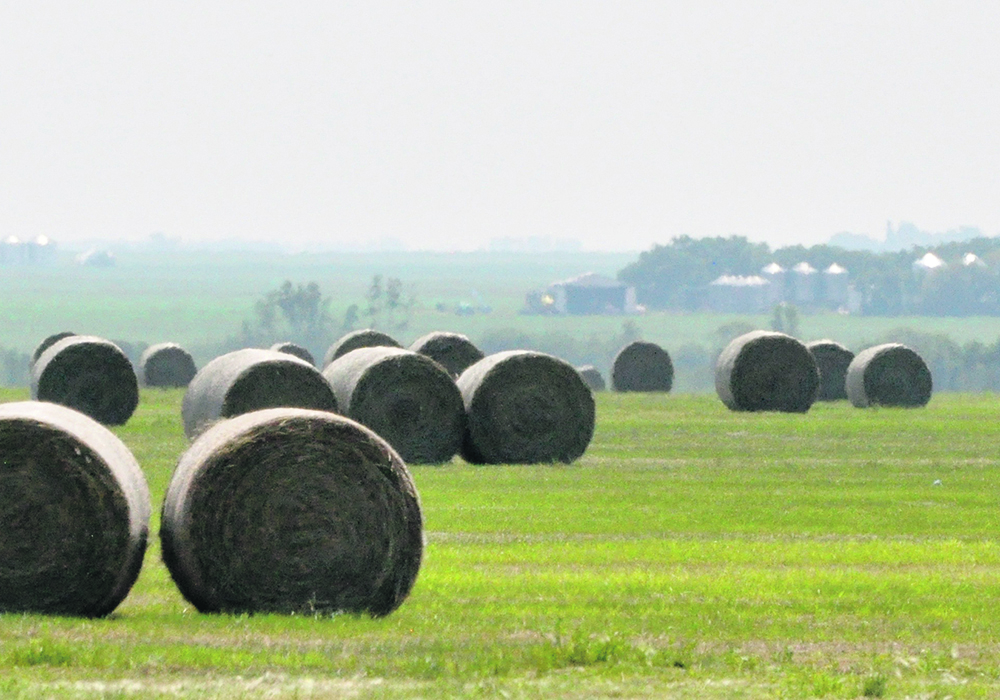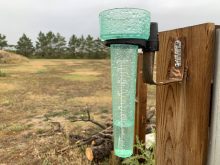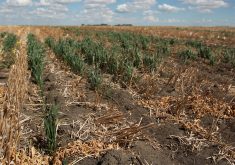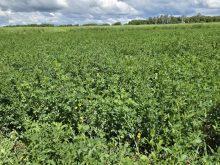Lack of rain in Alberta is top priority as the spectre of crop failures and feed shortages push producers to the edge
Alberta’s newest agriculture minister has a full plate as wildfires, drought, growing fears of a feed shortage and low river levels impacting irrigation districts are creating a not-too-tasty dish to swallow as he assumes his first cabinet position.
RJ Sigurdson was re-elected in May for his second term in the riding of Highwood, which borders the southern limits of Calgary, and subsequently replaced former agriculture and irrigation minister Nate Horner, who’s now finance minister.
In his first full interview since being tapped in early June to become Alberta’s latest agriculture minister, Sigurdson said the dry conditions producers are facing in many parts of the province were on the top of the pile of issues to address.
Read Also

More factors affecting winter weather
When you combine a weak La Niña, early Siberian snow, and a warm northern Pacific, it’s easy to see why long-range winter forecasting is so complex.
“We’ve seen some rain since then and a lot of areas have improved across the province but, of course, there are still some areas which are seeing heavy drought conditions,” he said.
He heard about those conditions from producer organizations directly during the Calgary Stampede.
“They’ve expressed concern on what that means moving forward. We understand the knock-on impact when pastures aren’t seeing the rain they need and we’re not getting the hay crops. There is the knock-on impact of increased feed prices, so that is always a concern for the livestock industry.”
Sigurdson said the recent doubling of low thresholds by Agriculture Financial Services Corp. will streamline of the process of turning failing crops into livestock feed.
He said the ministry plans to track feed availability and the cost in coming weeks.
There have also been conversations regarding the provincial business risk management programs.
“I will always continue to work with industry to make sure that I promote what we have, whether it be moisture deficiency insurance or AgriStability and to work with producers to make sure those programs are working and working well,” he said.
The upcoming federal-provincial-territorial agricultural ministers’ meeting planned for New Brunswick later this month presents an opportunity to get acquainted with his counterparts, but Sigurdson said there isn’t a specific or unified request of western ministers.
As far as the nearly $1 billion being invested in improvements to irrigation systems, which include feasibility studies on increasing on-stream storage capacity and possibly creating a new irrigation district on the Red Deer River, Sigurdson said he is excited about the prospects.
“Alberta has become a beacon for (agri-food) companies to come to because of our economic environment and low taxes. And now, even beyond that, with our agri-food processing tax credit,” said Sigurdson. “Because Alberta has so much irrigated land, they have the confidence of a consistent quality and a consistent yield.”
But the provincial agriculture sector is also facing challenges from Alberta’s main economic driver. Reclamation of oil and gas infrastructure is an increasingly irksome issue for producers and rural municipalities.
Renewable energy production is also causing friction with many complaints from producers that it takes prime land out of agricultural production.
“This is an ongoing conversation,” said Sigurdson “We want to make sure that as a province, we find a proper balance when it comes to that.”
Getting up to speed with the demands of a busy department for a first-time cabinet appointment may be like trying to take a sip of water from a firehose, but Sigurdson said his friendship with Horner has helped.
“We’ve had conversations over the last two years while he was minister of agriculture and he continues to support and be there for the conversation as I continue to transition in the space,” said Sigurdson.
“That continuity has really provided stability as we continue to move forward as a province. I’m really appreciative of the work he did as minister of agriculture for creating such a strong department as well as being there every step of the way.”
Sigurdson is Alberta’s third agriculture minister since 2019, with Devin Dreeshen and Horner preceding his appointment.
















